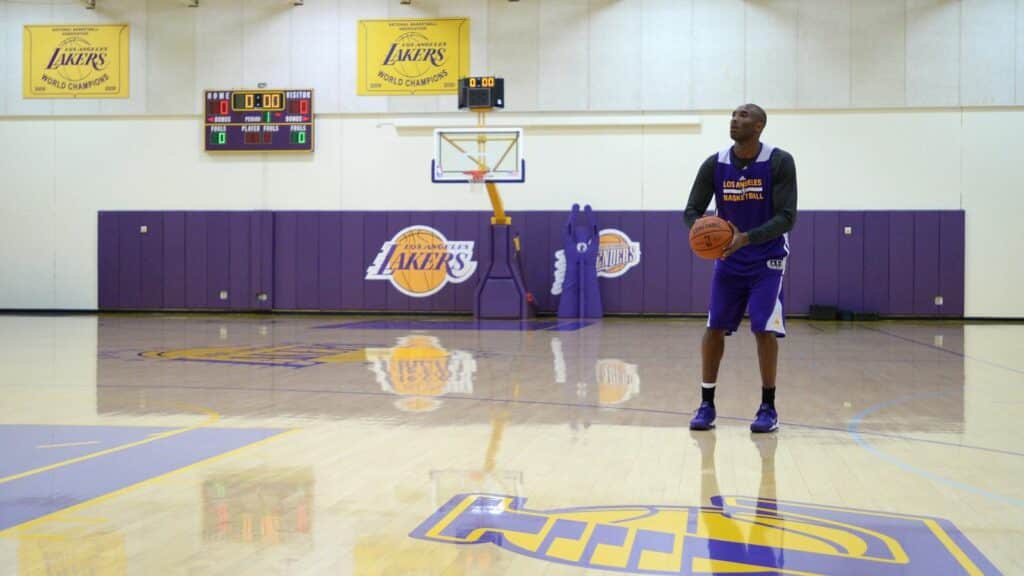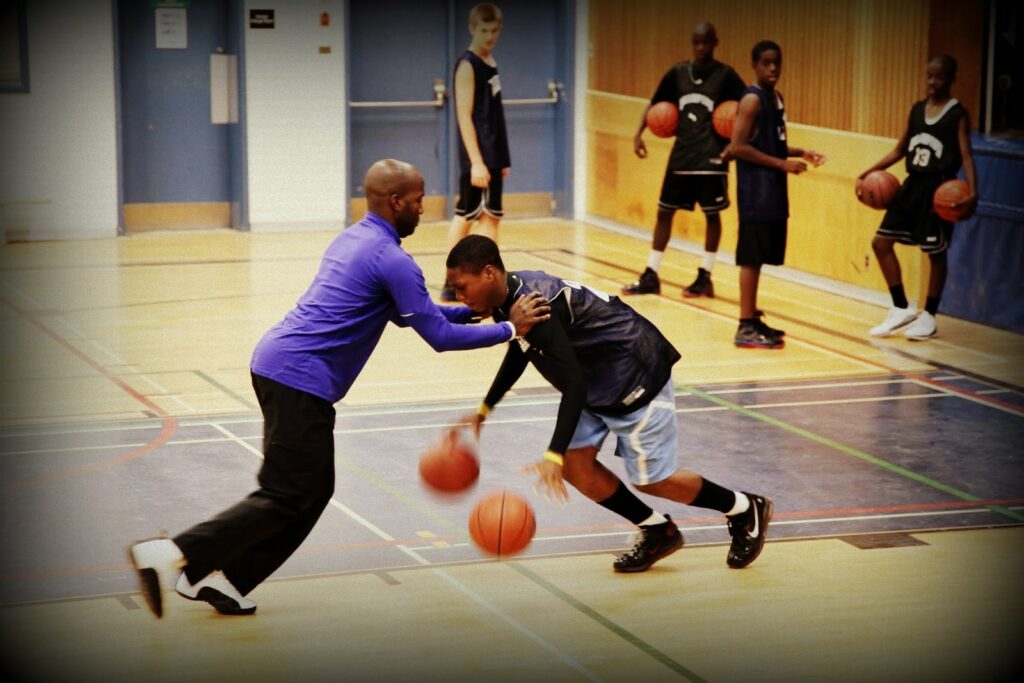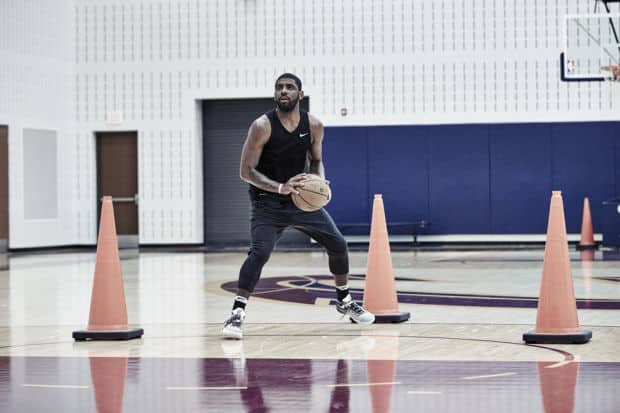
Creating a Comprehensive Player Evaluation Process: Getting to Fully Know Your Players
A comprehensive player evaluation process is essential for any successful basketball program. It allows coaches to assess players’ skills, potential, and development needs systematically, ensuring that each player’s strengths and weaknesses are addressed effectively.
This article provides a detailed guide on creating a robust player evaluation process that supports player development and enhances team performance.

1. Establish Evaluation Criteria
Before conducting evaluations, it’s crucial to define the criteria against which players will be assessed. These criteria should cover various aspects of a player’s performance and potential:
Skills and Abilities
Evaluating fundamental skills is the cornerstone of any player assessment. Key skills include:
- Shooting: Assess accuracy, range, and shooting form. Use standardized drills, such as spot shooting or three-point contests, to measure shooting proficiency.
- Dribbling: Evaluate ball-handling skills under pressure, including crossovers, hesitation moves, and change of pace. Incorporate drills that mimic game situations, such as navigating through cones or defensive players.
- Passing: Assess the ability to make accurate passes under different circumstances. Consider using drills that focus on both stationary and moving targets, as well as passing under defensive pressure.
- Defense: Evaluate defensive techniques, including on-ball defense, help defense, and communication. Use drills that simulate various defensive scenarios, allowing players to showcase their ability to stay in front of their opponents and contest shots.
Physical Attributes
Physical attributes can significantly influence a player’s performance and potential. Key areas to assess include:
- Speed and Agility: Conduct timed sprints, shuttle runs, or agility ladder drills to measure quickness and footwork. These metrics can provide insight into a player’s ability to navigate the court effectively.
- Strength: Assess functional strength through exercises like push-ups, pull-ups, and resistance training drills. Consider using weightlifting metrics for older or more advanced players to gauge their physical development.
- Endurance: Measure cardiovascular fitness through timed runs or specific drills that replicate game conditions, such as continuous court sprints. High-intensity interval training (HIIT) drills can also help assess a player’s ability to maintain performance throughout the game.
Basketball IQ
Evaluating players’ understanding of the game is crucial for long-term success:
- Decision-Making: Assess players during scrimmages or game situations. Focus on their ability to read defenses, make smart passes, and take appropriate shots.
- Court Awareness: Use video analysis to review game footage with players. Discuss positioning, spacing, and the effectiveness of their choices during plays.
- Strategic Thinking: Engage players in discussions about game plans and tactics. Encourage them to analyze different offensive and defensive strategies and their impact on game outcomes.
Work Ethic and Attitude
A player’s mindset can significantly affect their development. To assess work ethic and attitude:
- Effort Levels: Observe players during practices and games. Look for signs of hustle, willingness to improve, and resilience in the face of challenges.
- Commitment: Use attendance records and participation rates in practice sessions to gauge each player’s commitment to the team.
- Team Interaction: Pay attention to how players communicate and collaborate with teammates. A positive attitude and supportive nature can greatly enhance team dynamics.

2. Develop Evaluation Tools and Methods
Utilizing a variety of tools and methods can provide a comprehensive overview of each player’s abilities:
Skills Assessments
Create specific drills to assess each skill area:
- Shooting Assessments: Utilize a combination of free throws, spot shooting, and three-point shots, tracking makes and misses to quantify shooting efficiency. Incorporate drills that simulate game situations, such as shooting after a dribble or coming off a screen.
- Dribbling Assessments: Conduct dribbling drills under pressure, such as dribbling past defenders or through obstacle courses. Use a stopwatch to measure completion time and assess control.
- Passing Assessments: Set up passing drills that require players to make different types of passes (bounce, chest, overhead) under varying conditions. Evaluate accuracy and decision-making.
- Defensive Assessments: Use situational drills to gauge players’ defensive skills. Assess their ability to stay in front of their opponents, communicate with teammates, and anticipate plays.
Game Performance Analysis
Analyzing players’ performance during games is crucial for understanding their impact on the court:
- Statistical Tracking: Maintain detailed statistics for each player, including points scored, assists, rebounds, steals, blocks, turnovers, and shooting percentages. This data will be valuable for post-game evaluations and long-term progress tracking.
- Video Review: Record games and use video analysis tools to review player performance. Focus on specific plays to highlight both strengths and areas for improvement. Discuss these observations with players during feedback sessions.
- Self-Reflection: Encourage players to review their own game footage. Provide guided questions to help them analyze their performance critically and identify areas for growth.
Physical Testing
Physical testing is vital for understanding a player’s athleticism:
- Speed and Agility Testing: Conduct tests such as the 40-yard dash, pro agility shuttle, or T-test to evaluate speed and quickness. Record times and use these metrics to compare players against benchmarks.
- Strength Testing: Use bodyweight exercises (push-ups, pull-ups) and resistance exercises (squats, deadlifts) to assess strength. Consider performing regular assessments to track improvements over time.
- Endurance Testing: Measure endurance through a timed beep test or long-distance running. This helps determine players’ fitness levels and ability to maintain performance during games.
Feedback Mechanisms
Incorporate feedback mechanisms to ensure players understand their evaluations:
- One-on-One Meetings: Schedule individual meetings with players to discuss evaluation results. Provide constructive feedback and collaboratively set development goals.
- Player Surveys: Utilize anonymous surveys to gather player feedback on coaching methods, team dynamics, and personal goals. This promotes open communication and a positive team culture.
- Goal Setting: Work with players to set both short-term and long-term goals based on evaluation outcomes. This encourages personal accountability and fosters a growth mindset.

3. Implement a Structured Evaluation Schedule
A structured evaluation schedule ensures that evaluations are conducted regularly and consistently:
Pre-Season Evaluations
Conduct evaluations before the season starts to assess players’ readiness:
- Initial Assessments: Use this time to evaluate fundamental skills, physical attributes, and player attitudes. Gather baseline data to inform coaching strategies for the upcoming season.
- Goal Setting: Encourage players to set personal goals for the season. Discuss how these align with the team’s objectives and how the coaching staff can support their development.
In-Season Evaluations
Schedule periodic evaluations throughout the season to monitor progress:
- Regular Check-Ins: Implement mid-season evaluations to assess players’ growth and adjust training plans as needed. Use performance data from games and practices to inform these discussions.
- Skill Refreshers: Identify skills that need reinforcement and dedicate practice time to these areas. Consider introducing specialized drills focused on improving weaknesses.
Post-Season Evaluations
Evaluate players at the end of the season to review their overall performance:
- Comprehensive Reviews: Conduct thorough evaluations that include both statistical analysis and qualitative feedback. Highlight achievements and areas for growth.
- Off-Season Development Plans: Work with players to create individualized off-season training plans based on evaluation results. Set specific goals for improvement that players can work on independently.

4. Create an Inclusive Evaluation Environment
Establishing an inclusive evaluation environment encourages player engagement and trust:
Promote Transparency
- Clear Communication: Ensure that players understand the evaluation process, including criteria and methods. Transparency fosters trust and encourages players to engage fully in their assessments.
- Feedback Loop: Create opportunities for players to provide feedback on the evaluation process itself. This can help refine methods and make evaluations more relevant to players’ experiences.
Foster a Positive Culture
- Encourage Growth: Frame evaluations as opportunities for growth rather than judgments. Emphasize that every player has the potential to improve and that the evaluation process is designed to support their development.
- Recognize Efforts: Celebrate progress and effort, not just achievements. Acknowledging hard work fosters a positive team atmosphere and motivates players to strive for improvement.
Creating a Comprehensive Player Evaluation Process Conclusion:
A comprehensive player evaluation process is vital for any basketball program aiming for success. By establishing clear criteria, utilizing diverse evaluation tools, maintaining a structured schedule, and fostering an inclusive environment, coaches can effectively assess and develop their players.
This systematic approach not only enhances individual performance but also strengthens the entire team, paving the way for long-term success on and off the court.



